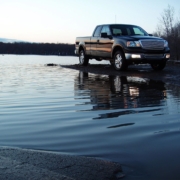Posts
Who is covered—and when?
Your auto policy will cover you and other family members on your policy, whether driving your insured car or someone else’s car with permission. Your policy also provides coverage if someone not on your policy is driving your car with your consent.
Your personal auto policy only covers personal driving, whether you’re commuting to work, running errands or taking a trip. Your personal auto policy, however, will not provide coverage if you use your car for commercial purposes—for instance, if you deliver pizzas or operate a delivery service. Note, too, that personal auto insurance will generally not provide coverage if you use your car to provide transportation to others through a ride-sharing service such as Uber or Lyft. Some auto insurers, however, are now offering supplemental insurance products (at additional cost) that extend coverage for vehicle owners providing ride-sharing services.
In many states, uninsured coverage is optional, but remember that about 13% of drivers don’t have insurance. You’ll usually have the option of choosing the dollar limits of your coverage. For the bodily injury portion that covers your injuries, consider matching the amount of your liability coverage. Some states will give you no other option but to choose identical limits.
For example, if your limits of liability are $50,000 per person/$100,000 per accident, consider choosing the same limits for uninsured motorists coverage and underinsured motorists coverage. If you’re hit by an uninsured driver, each injured passenger(including the driver) can collect up to $50,000. If two passengers collect the full $50,000, then you’ve reached your $100,000 maximum per accident.
Your uninsured motorists property damage (UMPD) limit is a different (and much easier) story. This is the part that covers your car. You can select a limit that closely mirrors the value of your vehicle. If your car is worth $25,000, and you don’t have collision coverage, then you should consider that much in UMPD coverage.
If you rely on your car, rental reimbursement is an inexpensive and invaluable option that you’ll want to consider adding to your auto insurance policy.
On average, a car is in the repair shop for two weeks after an accident and renting a replacement vehicle for that amount of time can be costly. Many insured drivers are surprised to find out that their auto insurance does not automatically cover the cost of their rental because they’ve overlooked the policy option known as rental reimbursement.
Rental reimbursement coverage is available for a nominal extra amount with almost every auto insurance policy, although the option is often bypassed by those who are shopping for the lowest cost premium.
But there are a number of other ways to save money on auto insurance and, if your car is in the shop for an extended period, rental reimbursement can be a bargain. Even if your accident is another driver’s fault, the details of a claim may take time and you may have to wait get his or her insurance company to agree to pay for your rental car. With your own replacement rental coverage, there’s no waiting.
Collision is commonly confused with comprehensive. They’re both optional coverages and pay to repair or replace your car (if it’s totaled). But they cover separate events. In short, collision covers accidents (other than with animals) and comprehensive covers events that are beyond your control such as theft, vandalism, hitting an animal, fire, glass breakage or an act of nature.
Think of it this way: Collision is colliding with another vehicle or object (other than animals). Comprehensive is all other events. Accidents with animals are covered by comprehensive (and not collision) because these accidents are considered out of your control. Also, you can’t add only collision. You have to add comprehensive first and then collision.
People leave stuff in their cars every day. We drop our cell phones in the cup holder, leave a bag on the floor, and throw our golf clubs in the back seat. We’re human, so we forget about this stuff, park, and go inside. It happens. The thing is, sometimes when we come back to our cars, the things we left aren’t where we left them.
Does insurance cover this type of claim? If so, is it your homeowners insurance policy or auto insurance policy?
Some homeowners’ insurance policies treat your car as an extension of your house. That means your personal property coverage would protect almost anything (purses, luggage, camera equipment, electronics…all kinds of things) stolen from your car. This coverage may even be better than what’s offered by comprehensive car insurance! For instance, did you know comprehensive coverage usually doesn’t cover jewelry, clothing, and accessories kept in your car?
Keep in mind, though, that any claim would be subject to a deductible (most likely $500 or $1,000).
If you have additional questions, please feel free to contact our office.
The Holste Agency can provide you with the best Arvada auto insurance rates available. With access to more than 50 top-rated insurance companies, we can provide you with multiple insurance quotes with a variety of insurance coverage options. Our top-notch customer service staff will help you maximize your insurance discounts and ensure your policy has the lowest Arvada auto insurance rates available.
To get your free insurance quote, please visit our Get a Quote page or give our office a call and we’ll be happy to help.

